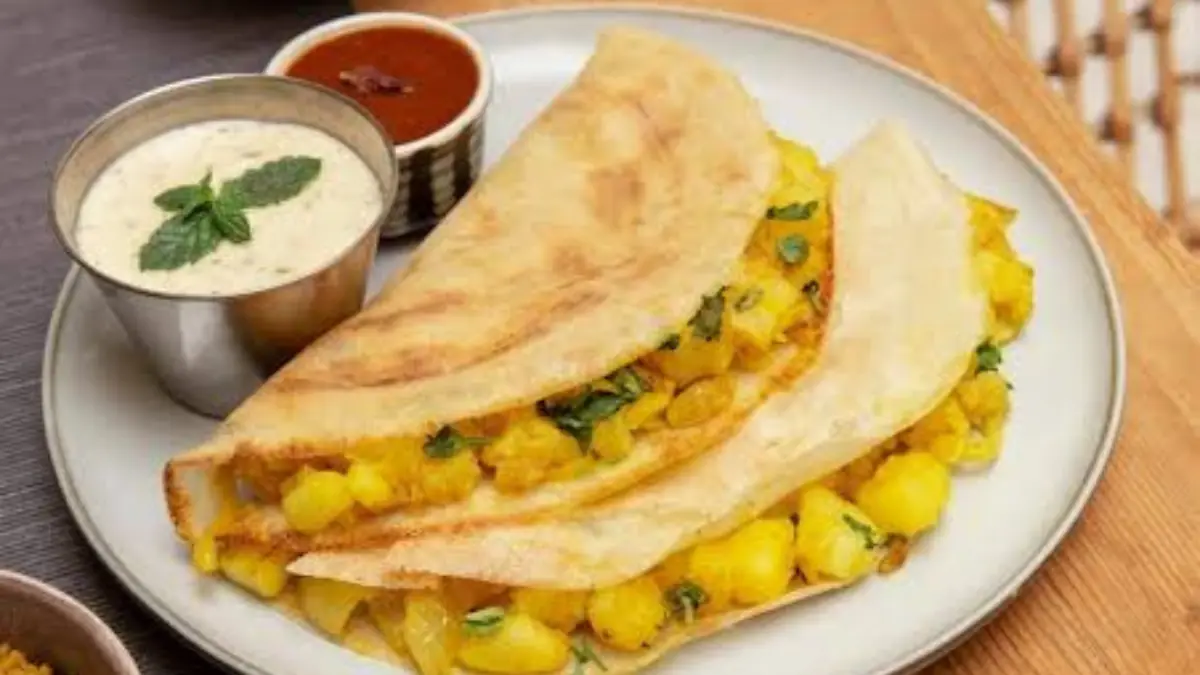The Davangere benne dosa is a speciality from the town of Davangere in Karnataka. Unlike regular dosas, this version uses more butter during cooking, which infuses the dosa with a distinct richness and a slightly sweet aroma from the fermented batter. The surface develops small holes during cooking, giving the dosa a spongy middle and a crisp base.
Traditionally, this dosa is paired with potato palya (a mildly spiced mashed potato filling) and coconut chutney. The batter preparation is key to achieving the correct texture. A blend of rice, urad dal, and a small amount of methi seeds is soaked, ground to a smooth paste, and left to ferment overnight. The fermentation not only helps in leavening but also enhances the flavour.
Nutritionally, the dosa offers carbohydrates from rice, plant-based protein from urad dal, and healthy fats from butter. While it is an indulgent dish, it can still be enjoyed as part of a balanced diet when eaten in moderation.
For best results, the dosa is cooked
The Davangere benne dosa is a speciality from the town of Davangere in Karnataka. Unlike regular dosas, this version uses more butter during cooking, which infuses the dosa with a distinct richness and a slightly sweet aroma from the fermented batter. The surface develops small holes during cooking, giving the dosa a spongy middle and a crisp base.
Traditionally, this dosa is paired with potato palya (a mildly spiced mashed potato filling) and coconut chutney. The batter preparation is key to achieving the correct texture. A blend of rice, urad dal, and a small amount of methi seeds is soaked, ground to a smooth paste, and left to ferment overnight. The fermentation not only helps in leavening but also enhances the flavour.
Nutritionally, the dosa offers carbohydrates from rice, plant-based protein from urad dal, and healthy fats from butter. While it is an indulgent dish, it can still be enjoyed as part of a balanced diet when eaten in moderation.
For best results, the dosa is cooked on a thick iron tawa to ensure even heat distribution. Fresh white butter, which is softer and less salty than store-bought table butter, is used both during cooking and while serving. The combination of the buttery flavour, the soft centre, and the crisp edges makes it a beloved street food and home-cooked delicacy in Karnataka.
Once the batter is fermented, the cooking process is straightforward. Heat the tawa well before pouring the batter, spread it slightly thicker than a regular dosa, and add butter generously along the edges and on top. Covering the dosa while it cooks helps it turn spongy. Serve it immediately for the best texture, as the dosa tends to lose its softness if left to cool.








